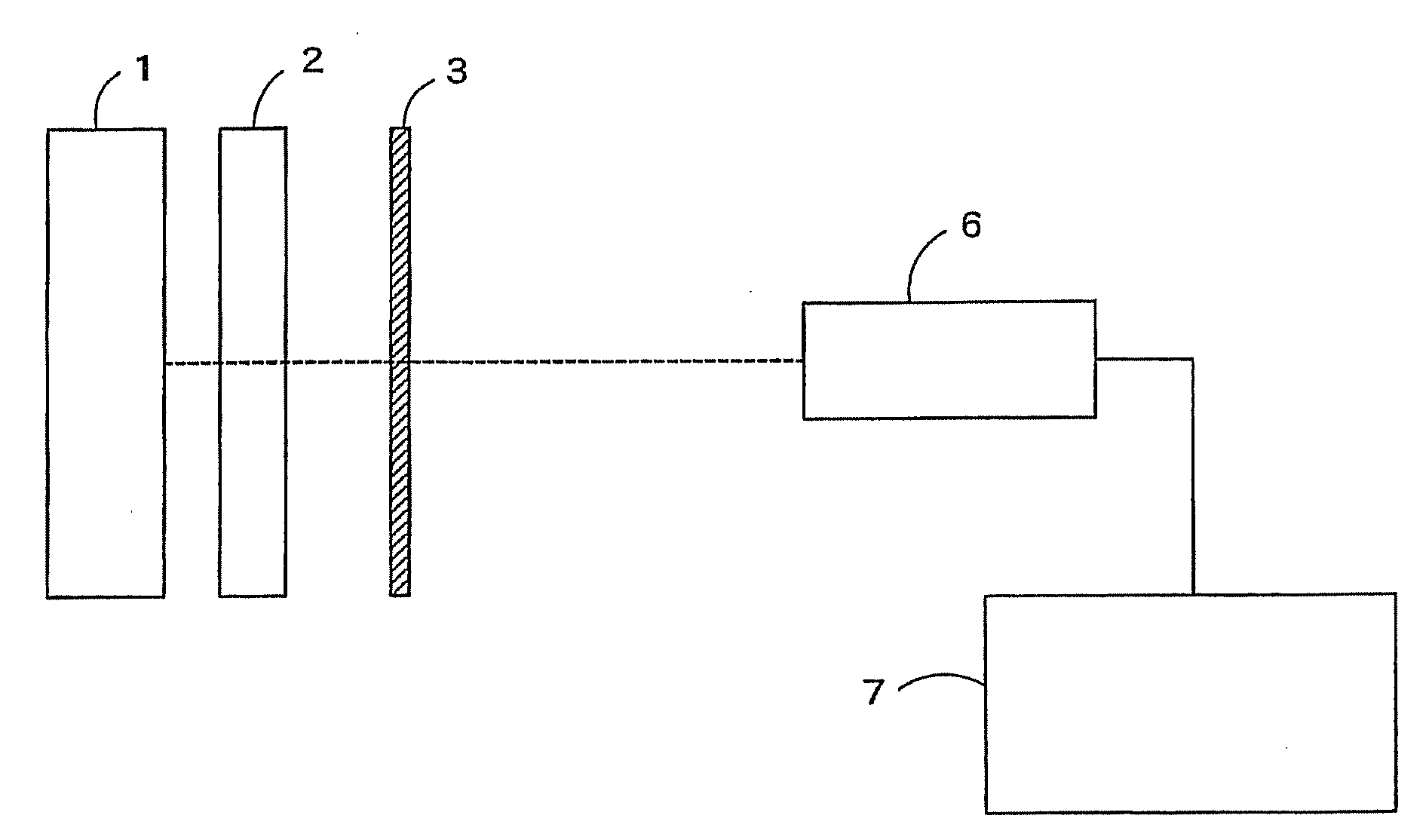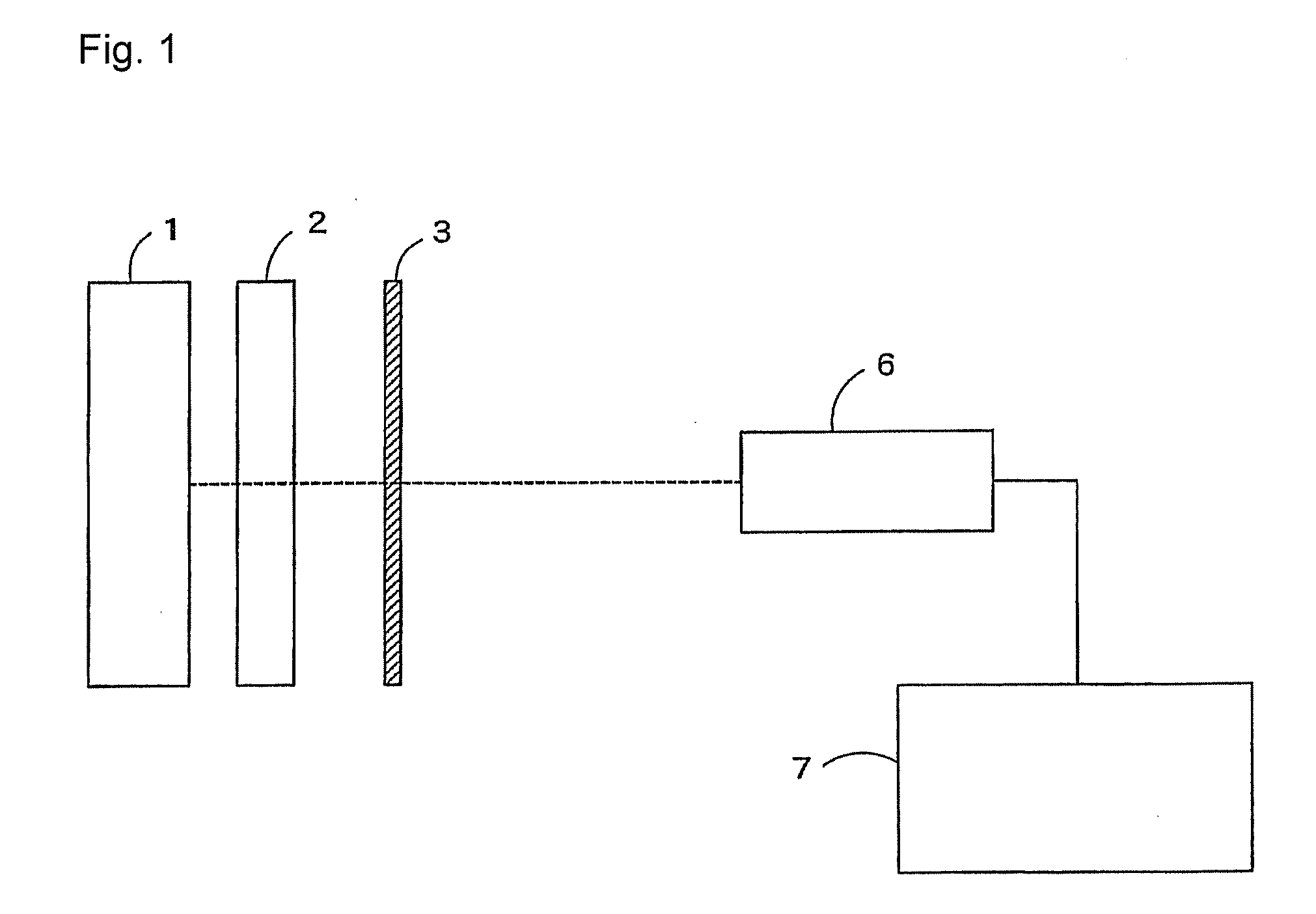Glare-Proofing Optical Laminate
a technology of optical laminates and glare-proofing, applied in the direction of thin material processing, instruments, coatings, etc., can solve the problems of difficult to achieve the effect of anti-glare laminates per se, narrow and large curve of concavex shapes, and difficult to achieve satisfactory antiglare properties, letter blurring prevention, and low surface haze value.
- Summary
- Abstract
- Description
- Claims
- Application Information
AI Technical Summary
Benefits of technology
Problems solved by technology
Method used
Image
Examples
example 1
[0308]An optical laminate according to the present invention was produced as follows.
[0309]Formation of Anti-Dazzling Layer
[0310]An 80 μm-thick triacetylcellulose film (TD80U, manufactured by Fuji Photo Film Co., Ltd.) was provided as a transparent base material. Composition 1 for an anti-dazzling layer was coated onto the film with a wire-wound rod for coating (Mayer's bar), and the coating was heat dried in an oven of 70° C. for one min to evaporate the solvent component. Thereafter, under nitrogen purge (oxygen concentration: not more than 200 ppm), ultraviolet light was applied at an exposure of 30 mJ for half curing to cure the coating film. Thus, a 5 μm-thick anti-dazzling hardcoat layer was formed. The light transparent fine particles were monodisperse acrylic beads having a particle diameter of 5.0 μm.
[0311]Formation of Surface Modifying Layer
[0312]The formed anti-dazzling layer was provided as a transparent base material. Composition 1 for a surface modifying layer was coat...
example 2
[0313]An optical laminate was produced in the same manner as in Example 1, except that composition 2 for an anti-dazzling layer was used. The light transparent fine particles in composition 2 for an anti-dazzling layer were monodisperse acrylic beads having a particle diameter of 9.5 μm, and the surface modifying layer had a thickness of 4.0 μm.
example 3
[0314]An optical laminate was produced in the same manner as in Example 1, except that composition 3 for an anti-dazzling layer was used. The light transparent fine particles in composition 3 for an anti-dazzling layer were monodisperse acrylic beads having a particle diameter of 13.5 μm.
PUM
| Property | Measurement | Unit |
|---|---|---|
| Haze | aaaaa | aaaaa |
| Haze | aaaaa | aaaaa |
| Luminance | aaaaa | aaaaa |
Abstract
Description
Claims
Application Information
 Login to View More
Login to View More - R&D
- Intellectual Property
- Life Sciences
- Materials
- Tech Scout
- Unparalleled Data Quality
- Higher Quality Content
- 60% Fewer Hallucinations
Browse by: Latest US Patents, China's latest patents, Technical Efficacy Thesaurus, Application Domain, Technology Topic, Popular Technical Reports.
© 2025 PatSnap. All rights reserved.Legal|Privacy policy|Modern Slavery Act Transparency Statement|Sitemap|About US| Contact US: help@patsnap.com


